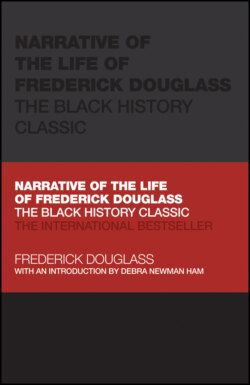Читать книгу Narrative of the Life of Frederick Douglass - Frederick Douglass - Страница 10
PLOTTING ESCAPE
ОглавлениеSome years later, Frederick was sent to work with Baltimore shipbuilders on the docks and learned the trade of caulking (sealing) ships. All the time, he secretly memorized written instructions for ships’ construction. Socially, some doors to free black homes and African American churches began to be open to him.
But just as Frederick was beginning to see a path out of slavery, the death of his master meant that he had to return to the Talbot County property. A subsequent owner's death resulted in Douglass, now a teenager, being assigned to several farms doing work for which he had no training or experience. In an attempt to break his assumed resistance (which was, more probably, his ineptitude) to this new labor, Frederick was sent to a “slave breaker,” Edward Covey, whose job was to beat slaves into lifelong submission to their owners. The Narrative includes horrible descriptions of his time under Covey, but ultimately the breaker was unsuccessful. Douglass somehow kept his dignity, and his intelligence and skills seemed to mark him out for other things.
Douglass c. 1840, in his early twenties. Photographer unknown
Psychologically, Douglass felt that he emerged from these experiences a free man, although legally he was still enslaved. He was sent to several other locations to do farm labor, and his biggest complaint was that most of them did not provide enough food or even enough time to eat the little they were given. At one location he developed a group of friends who worked and worshipped with him. He taught them how to read and provided Sunday School lessons to those who were willing. This instruction was a great source of pride.
In 1833, the group hatched an unsuccessful plan to run away. After being jailed for a short time, Douglass was returned to his former Baltimore home, where he worked again on the docks. Eventually, he began hiring himself out and presenting his wages to his master and receiving a small percentage for himself. He developed a relationship with a free black woman, Anna Murray, who would become his wife. She helped him cultivate friendships with others in the African American community both at work and at church, and the pair began planning a free life together.
